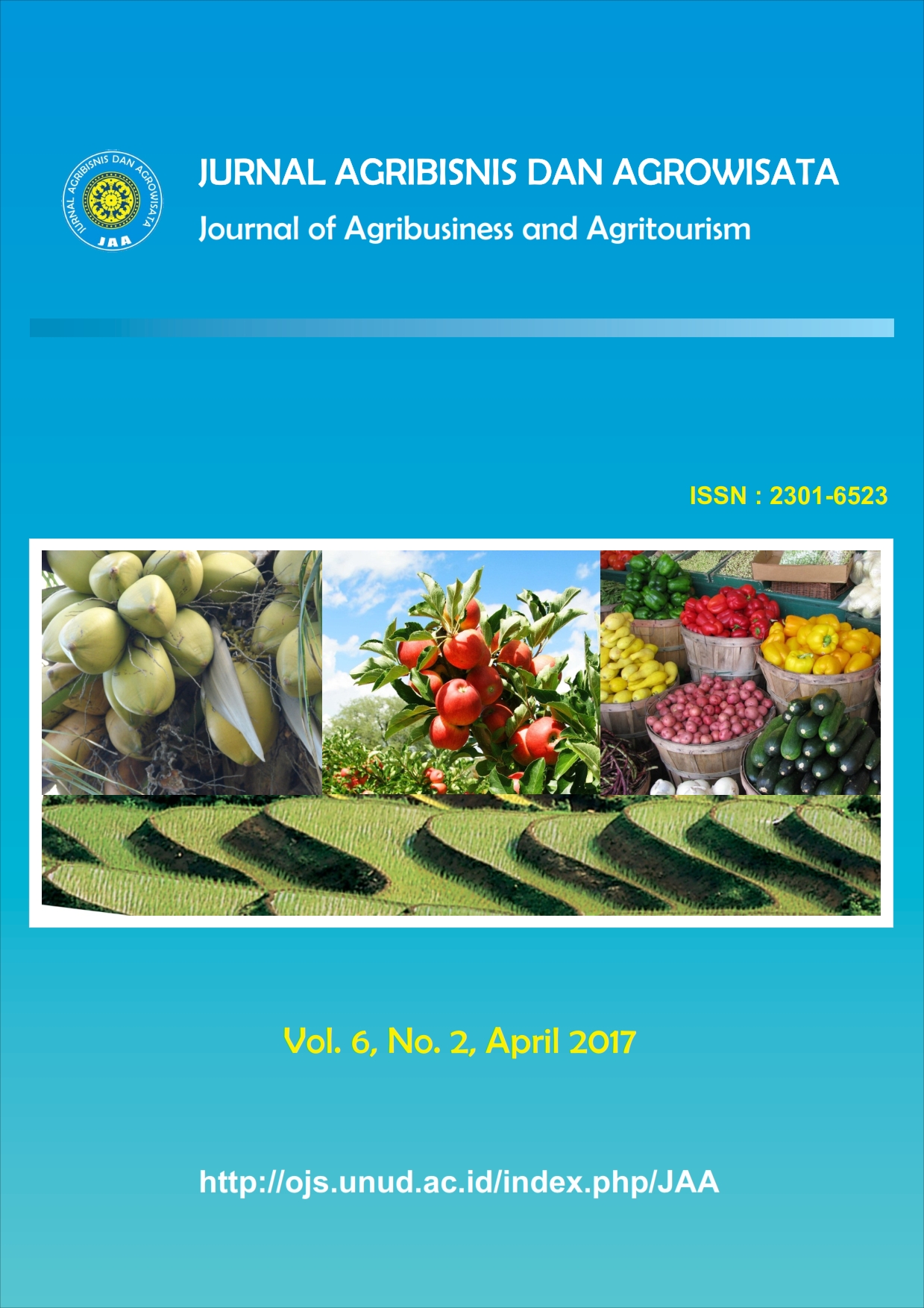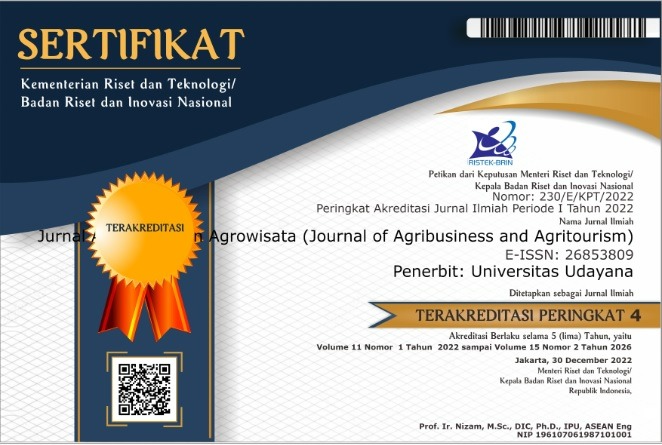Manajemen Irigasi Tradisional pada Sistem Subak Umaya di Desa Talibeng Kecamatan Sidemen Kabupaten Karangasem
Abstract
Traditional Irrigation Management at Subak Umaya System at Talibeng Village, Sub-district of Sidemen, Karangasem
Subak Umaya has a traditional irrigation system of water distribution system called bumbung. Subak generally faces problems of land use, loss of Tri Hita Karana elements and limitations of water. It is interesting to examine these conditions amid the problems of Subak irrigation system. On the initial observation at Subak Umaya showed that not all members use bumbung. The aim of research was to find out the traditional irrigation systems and irrigation water distribution to each member in the Subak Umaya. Data were analyzed by descriptive qualitative method. The research results indicate that the distribution of water in the form of water control system by using a tube/bumbung and cakangan. The rights to water is based on the size of land area. The water needs is based on the cropping pattern of rice - crops - crops. Ngulu-ngasep planting system. Subak implements the system of continuous flow and intermittent flow to water the plant. Conflict over water has never happened. Canals that are the responsibility of Subak begin from the tunnel after Yeh Masin river to tertiary canals. The rituals are held collectively and individually. Sources of funding come from active members and the government. The Subak structure are: pekaseh/ subak’s chief, vice of pekaseh, secretary, treasurer, kelian tempek, and assistant to kelian tempek. Members who use bumbung are 18%, and 82% were taking cakangan. Many members use cakangan for their leniency rules. The specialty of the bumbung is to prevent flooding, because it has a measurable hole. Subak Umaya is expected to save funds to repair the broken channel. Subak should provide intermittent water flow and reapply the bumbung system in order to grow rice simultaneously. Additionally, Subak may make strict rules regarding the use of langki and cakangan.







